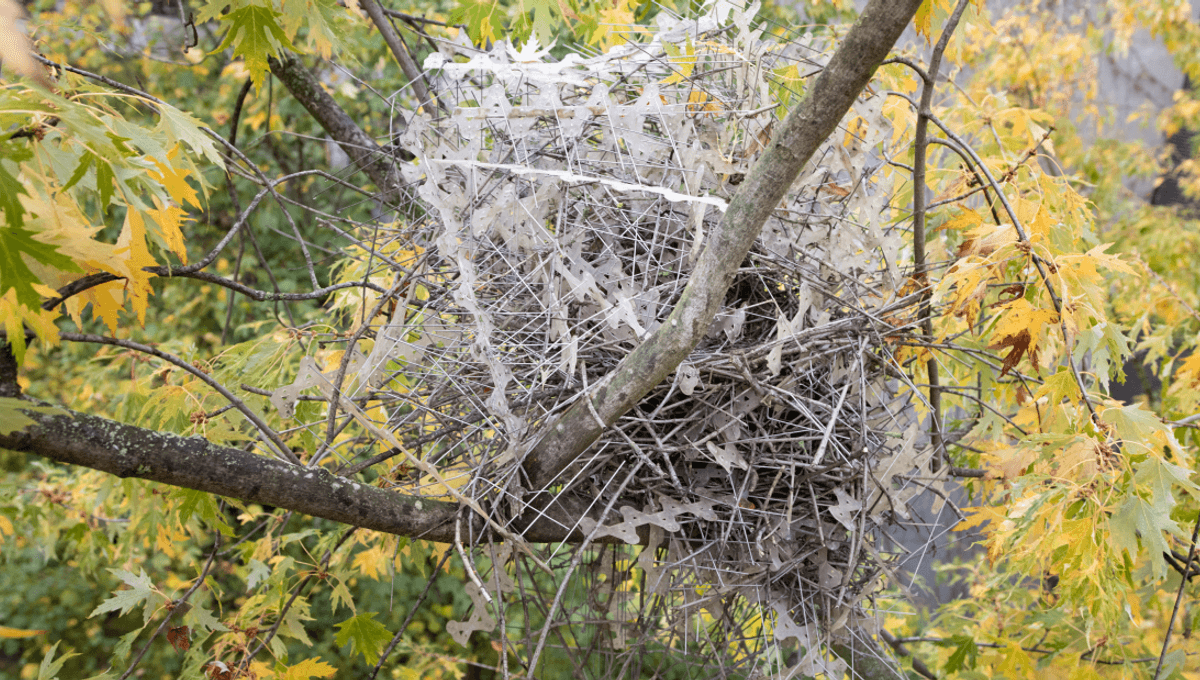
Just when you thought avian protests couldn’t get any classier than Cockatoo Eating A Croissant on a “no stopping” sign, researchers have discovered that in some places, birds are using metal spikes meant to deter them as nesting material. Seems humans’ attempts to make anti-bird spikes have worked a treat.
The metal nests don’t look exactly comfortable but may come with the benefit of protecting their eggs from other birds and predators. And as incorporating human-made materials into nests goes, they look cool as hell.
Crows are famously bold birds (not to be confused with ravens, though both are smart) that have been wowing with their extreme nesting materials as far back as 1933 when they were documented using barbed wire. In the proceeding decades, all manner of trash has rocked up in the nests of various bird species, but a new paper marks the first well-documented case of anti-bird spikes being used as nesting material.
Ripping off anti-bird spikes has been seen in a number of species, including Carrion crows in Rotterdam, The Netherlands, and Eurasian magpies in Belgium and Scotland. Now, it seems some are going a step further to incorporate them into their nests where they may even serve a functional role beyond just infrastructure.
“Magpies may use the anti-bird spikes not just as ordinary nest material, but specific placement in the dome, overarching the nest, hints at functional use,” write the authors of a new study. “The anti-bird spikes may be used by birds in the same way as they were intended to be used by humans: to ward off (other) birds.”
It’s probably the one thing the creator of anti-bird spikes didn’t want to happen.
It’s a smart move on the part of these famously clever birds, as magpie nests are predated by crows. Typically, they use thorns to keep hungry birds at bay, but as we are shifting into an era where the face of the planet is changing due to human activity, seeing human-made objects as functional parts of habitats may become increasingly common.
“In the Anthropocene, now that living biomass is outweighed by anthropogenic mass, alternative nesting materials are increasingly being adopted by urban birds,” the authors explain. “With birds even using bird deterring materials like anti-bird spikes as nesting material, anything may become part of a bird’s nest.”
For those unfamiliar with the phrase, the Anthropocene has been designated an epoch in which humans are influencing the climate and environment, although it will be a long time before anyone knows if this is the right decision. The longest geological categories are Eons, followed by Eras, which are broken down into periods that in turn consist of epochs and ages. Whether or not humanity will be around long enough for our dominance to qualify as an epoch remains to be seen, but if we’re all gone it seems the point could well be moot.
In which case, we defer to our corvid overlords.
The study is published in Deinsea.
Source Link: Magpies Are Making Nests Out Of Humans' "Anti-Bird" Spikes